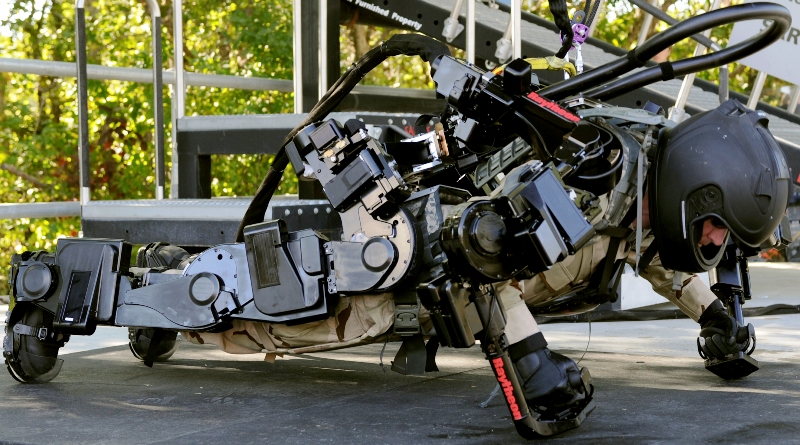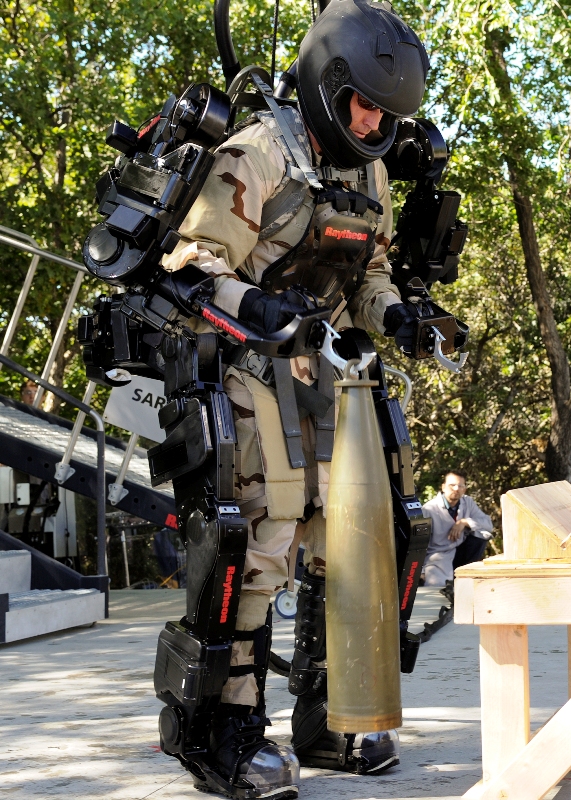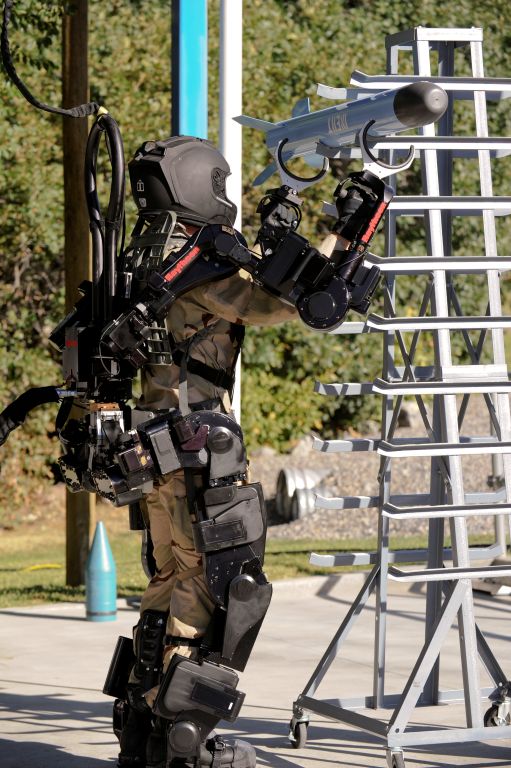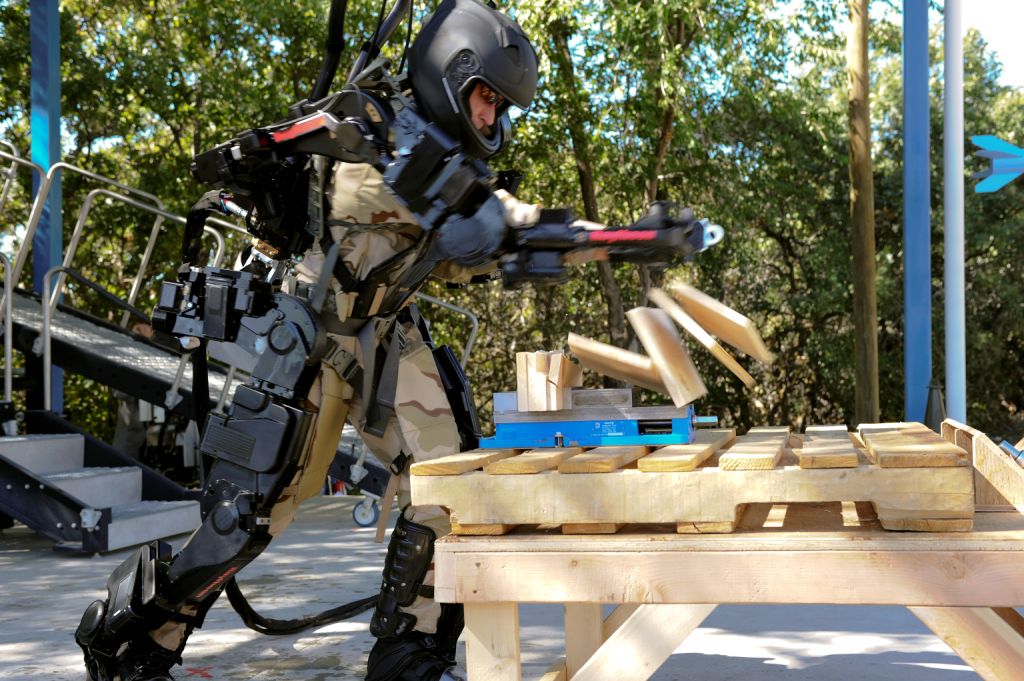It’s not a science fiction anymore, as sporting in the movie ‘Iron Man’ now the robotic suite ‘Exoskeleton’ is a reality. Raytheon Sarcos, the company behind this futuristic product unveiled their second generation exoskeleton (XOS 2) at the company’s Salt Lake City research facility this week.

This suit boost the power of the wearer by 17 times & just weight under 89kg. This is practical solution for military use for day to day heavy lifting jobs & where power matters. It’s just uses half of the power comparing to the Raytheon’s previous model XOS 1 & it’s lighter, stronger and faster too. XOS 2 is more robust with environment challenges & ticks many boxes in practical military applications.


Among the long list of XOS 2 practical applications, military personal logistics such as repetitive heavy lifting can lead to injuries, orthopedic injuries in particular. This robotic suite not only reducing both strain and exertion by lifting the objects for the wearer but also does the work faster. When it’s deployed single exoskeleton wearing soldier can cover 2 to 3 soldiers workload without a sweat.
This exoskeleton suit is powered by high pressure hydraulics & advanced combination of structures, sensors, actuators and controllers. Raytheon is working on two model of exoskeletons, based on power supply. Current model is connected via power cable (Tethered) the future model is Untethered model with no power cables attached to the suit. Due to the safety issues the current version is not attached with a rechargeable battery pack, eventually this would be a standard for future models.

As company personal, Mr Smith explains: ‘Some jobs allow for the tethering, say workers are storing or loading munitions in a small area. They can be hooked up to the power source. When donned, the suit seems to support itself, making its weight barely perceptible. It feels relatively lightweight, similar to a winter coat being draped across shoulders.’
Suit wearer Rex Jameson said: ‘Wearing the suit makes the 50-pound weight feel like three pounds, raising the 200-pound weight felt like 12 pounds.’
‘What is nice for me, in lifting all these weights, is I don’t feel it in my back.’
Originally for the earlier model XOS 1 was funded by U.S. Government through the DARPA (Defense Advanced Research Projects Agency) for eight years, at the rate of $4 million to $8 million a year. However funding for XOS 2 yet to approved by U.S. Government, despite the high interest by the military.
According to Dr. Fraser Smith, Raytheon Sarcos Vice President of Operations,
‘Getting exoskeletons deployed is inevitable. They are desperately needed, and I believe the military looks at them as viable solutions to a number of current issues they are trying to address. With a sustained commitment, they could be in place within five years.’
Information Source: Raytheon Sarcos (raytheon.com)

Children with a rare neurological disease were recently given the chance to walk for the first time thanks to a new robotic exoskeleton . These devices – which are essentially robotic suits that give artificial movement to a user’s limbs – are set to become an increasingly common way of helping people who’ve lost the use of their legs to walk. But while today’s exoskeletons are mostly clumsy, heavy devices, new technology could make them much easier and more natural to use by creating a robotic skin.